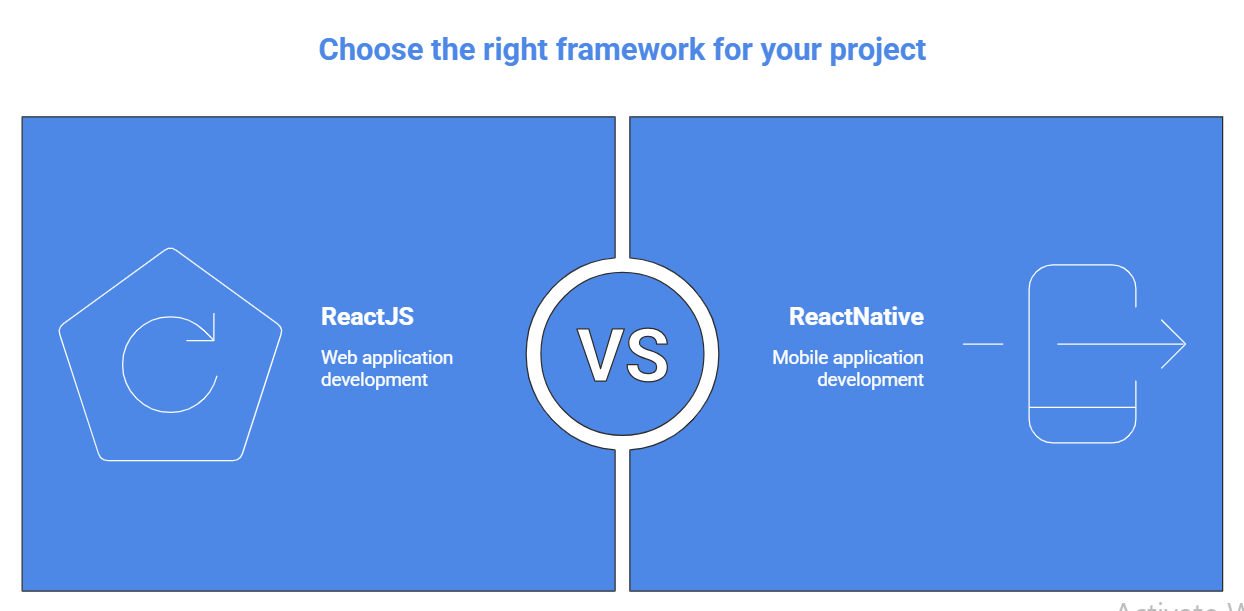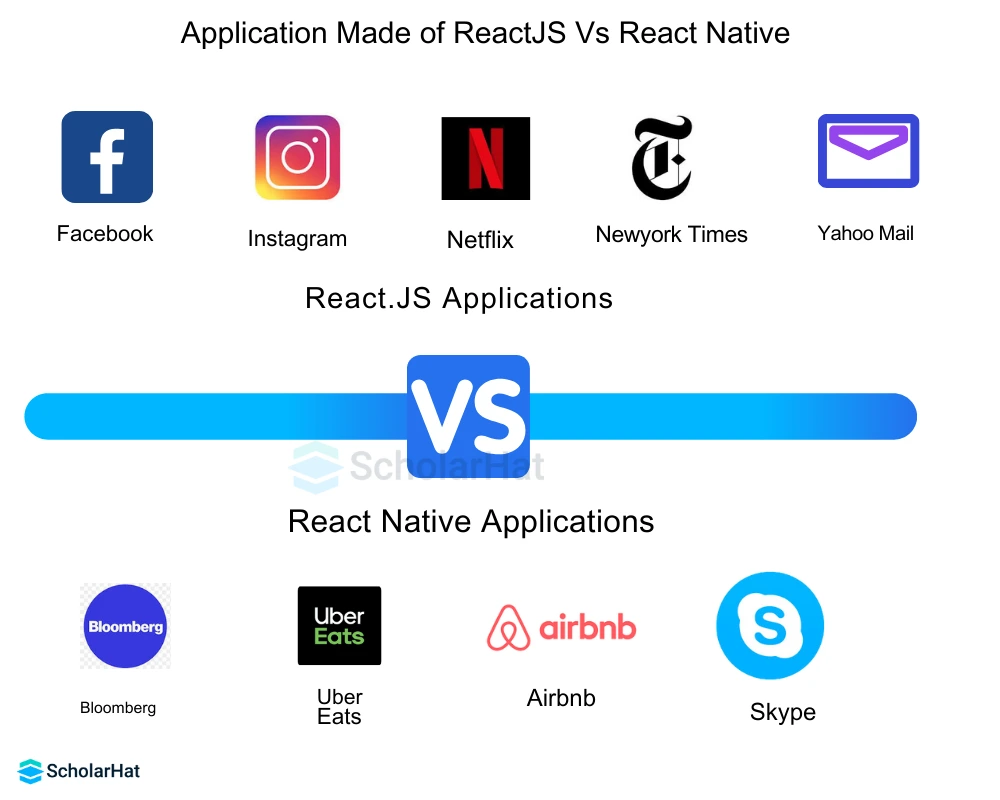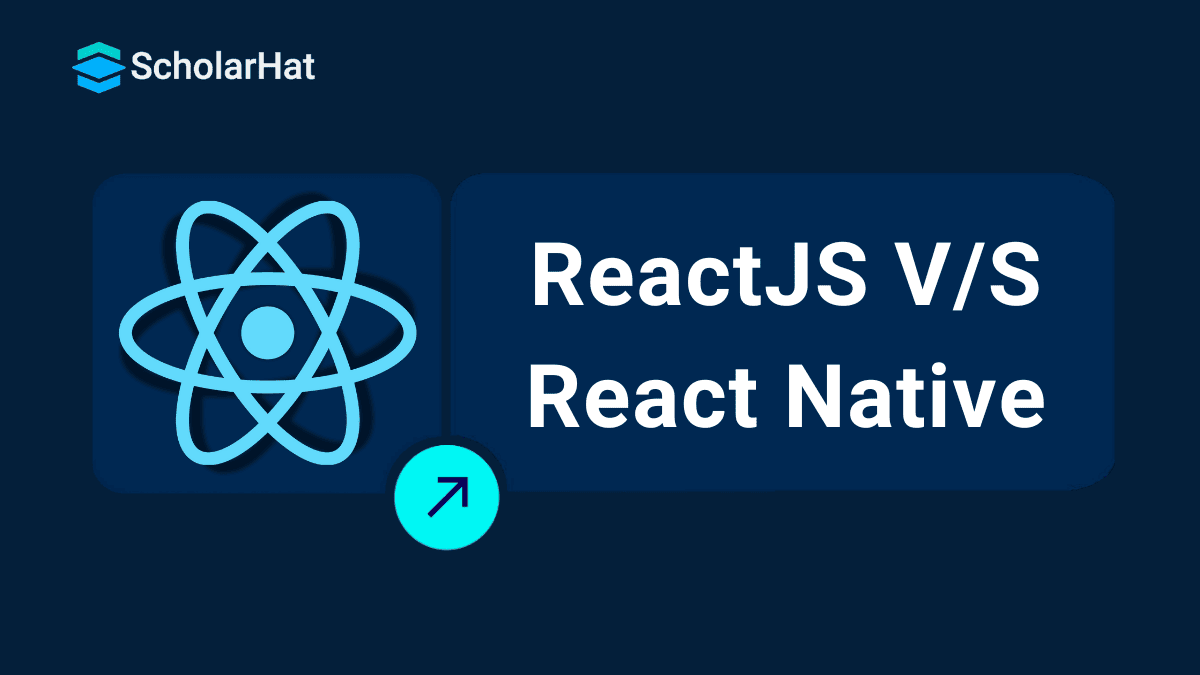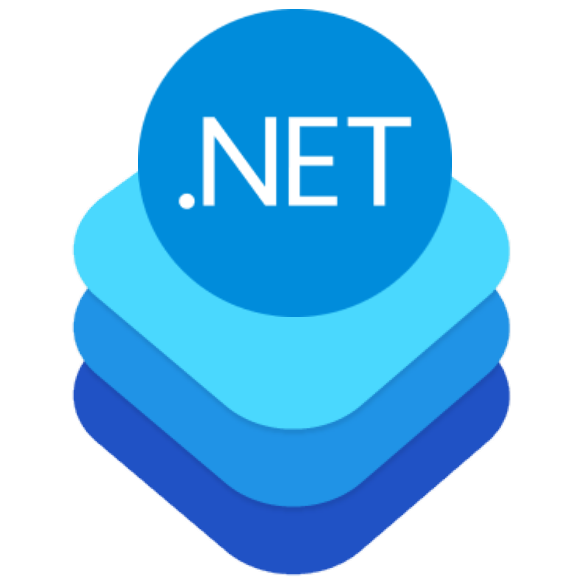29
DecReactJS vs. React Native: What's the Difference?
ReactJS (commonly called React) and React Native are both created by Facebook and share core principles like component-based architecture and declarative UI. However, their main uses and underlying mechanisms differ considerably. ReactJS is a JavaScript library for building single-page web applications. In contrast, React Native is a framework built on top of ReactJS for designing mobile apps. Additionally, with reusable components, we can create native mobile applications.
In this React Tutorial, let’s understand the difference between ReactJS and React Native by exploring their architecture, use cases, performance, platform compatibility, and real-world applications. 70% of front-end job listings now require React.js expertise. Don’t get left behind—join our Free React Course with Certificate and build in-demand skills!
What are ReactJS and ReactNative?
React JS:
- ReactJS is an open-source JavaScript library extensively used in single-page app development services. It is one of the popular libraries for building UI or front-end for web applications and Android applications. Initially, it was developed and backed by Facebook in 2011 and has gained huge popularity since then.
- It allows programmers to develop fast, adaptive, and intuitive mobile and web applications. Also, it ensures they automate the design process. By utilizing its characteristics, ReactJS programmers can build whatever they want without any rules.
- The developers can easily integrate plugins or libraries with existing code projects. It also enables developers to develop simple web applications.
- By leveraging React JS development services, you will be able to satisfy your customers’ requirements by offering them Progressive Web App Development, Single-Page Apps, and static websites.
React Native:
- React Native is an open-source, JavaScript-based framework developed by Facebook to address the growing demand for mobile application development.
- It is a hybrid mobile app framework that enables developers to build applications using a single codebase for multiple platforms.
- React Native allows the creation of cross-platform apps for iOS, Android, and even Windows, offering native-like performance and appearance
- It is built on top of React.js, sharing the same core principles, but differs in its library components, which are specifically designed for mobile platforms.
- While both ReactJS and React Native are component-based and declarative, ReactJS is used for web development, whereas React Native is focused on mobile development.
- React Native development costs vary depending on the app’s complexity, features, and platform-specific requirements.
- Both technologies are powerful in their respective areas, with ReactJS excelling in web applications and React Native offering efficient mobile solutions.
Read More - React Interview Questions For Experienced
ReactJS vs. React Native: A Real-World Comparison
https://dotnettrickscloud.blob.core.windows.net/article/react/5420250726175417.pnghttps://dotnettrickscloud.blob.core.windows.net/article/react/5420250726175417.png
| Aspect | React JS | React Native |
| Purpose | Uses HTML tags like <div>, <span>, <button> | Designed for building mobile apps that run on both iOS and Android |
| Platform support | Runs in web browsers | Runs on mobile platforms (iOS, Android) |
| UI components | Uses HTML tags like <div>, <span>, <button> | Uses native components like <View>, <Text>, <TouchableOpacity> |
| Styling approach | CSS, Sass, CSS-in-JS (styled-components, emotion) | Uses JavaScript-based styles similar to inline CSS |
| Performance | Optimized for browser environments with virtual DOM | Near-native performance using bridge to native APIs |
| Development tools | Browser dev tools, React Developer Tools | Expo, React Native CLI, Flipper, Android/iOS emulators |
| Code reuse | Reusable across different web projects | Reusable across iOS and Android (with some platform-specific tweaks if needed) |
| Learning curve | Easier for developers with a web background | Mobile apps, prototypes, MVPs, cross-platform app development |
React Native Vs ReactJS: Working:
In this section, we will get an idea of how React Native and ReactJS work. React uses the Virtual DOM to create amazing UX, while React Native uses APIs to render UI components that can be used again for both Android and iOS platforms. Let's see in-depth.
1.) Virtual DOM (ReactJS)
- The Document Object Model (DOM) is an essential programming interface that represents a web document and its content. The total capacity of libraries and frameworks to manage the DOM has a significant impact on how they are used and displayed in the end.
- It is a game-changer for React. It is a virtual representation of the real DOM.
- Virtual DOM manages quick updates while creating dynamic UIs.
- Virtual DOM is speedy, has enhanced performance, and better user experience than real DOM updates.
Example:
function scholarhat()
{
const element = (
<div>
<p> Learning Platform </p>
</div>
ReactDom.render(element, document.getElementById(‘root’));
}
setInterval (scholarhat,1000);2.) Native APIs (React Native)
- React Native uses Java APIs to render Android components, a native Application Program Interface (API), and Objective-C to write iOS components when rendering UI components.
- Following that, JavaScript is used to construct the remaining code and personalize the app for each platform, enabling maximum component reusability and code sharing.
- React Native doesn’t depend on CSS and HTML like ReactJS does. Hence, we have to create style sheets in JavaScript to style the components of React Native. However, it may look similar to CSS, but it is not the same.
Example:
import React, { component } from ‘react’;
import {text, view} from “react-native”;
export default class HelloWorldApp extends component
{
render()
{
return
{
<view>
<text> Learning Platform </text>
</view>
}
}
}Read More - React JS Roadmap For Beginners
When to use ReactJS?
ReactJS is best suited for web development projects that require dynamic and interactive user interfaces built on the beat of JavaScript. A few common use cases for ReactJS include:
1.) Single-page applications (SPAs):
ReactJS is well-suited for building single-page applications, where the complete UI can update dynamically without requiring a full page refresh.
2.) Complex web interfacing:
It makes it simple to construct complex client interfaces by breaking them down into smaller, reusable components.
3.) Large-scale web applications:
ReactJS has been battle-tested at scale and is utilized by many large companies for their web applications. This implies that it incorporates a demonstrated track record of being able to handle complex and demanding use cases.
4.) Responsive web plan:
ReactJS permits developers to construct responsive and versatile user interfaces that are incredible on any device, from desktop computers to portable phones.
When to use React Native?
React Native can help build solutions for a wide range of projects and issues within the mobile application development space. A few of the most commonly used cases :
1.) Cross-platform development:
It may be an extraordinary choice for building cross-platform applications because it permits developers to write a single codebase that runs on both iOS and Android. This could essentially decrease the time and resources required for development and maintenance.
2.) Cost-effectiveness:
It allows for quicker and more effective development, which can result in taking a toll on savings compared to traditional native app development. Typically due to the ability to reuse code over platforms and the ease of development given by the React framework.
3.) Speedier time-to-market:
It can also assist you in getting your app to market quicker than traditional local development, because it requires less time to develop, test, and launch. This may be particularly vital for start-ups and businesses that need to rapidly approve their thoughts and pick up traction.
4.) Iterative development:
It is used for iterative development, meaning that developers can build, test, and iterate on their apps more quickly and effortlessly than with traditional native development strategies.
5.) Local functionality:
React Native provides access to native APIs and platform-specific highlights, so developers can build apps that look and feel like traditional native apps while still taking advantage of the benefits of a single codebase.
ReactJS vs. React Native Developer Salary (India)
| Experience level | React JS Developer | React Native Developer |
| Entry-Level (0–2 yrs) | ₹3.5 – ₹6 LPA | ₹4 – ₹7 LPA |
| Entry-Level (0–2 yrs) | ₹8 – ₹12 LPA | ₹9 – ₹14 LPA |
| Senior (5+ yrs) | ₹15 – ₹25+ LPA | ₹16 – ₹28+ LPA |
Benefits and Limitations of ReactJS and react native
1.) React:
ReactJS is the right library for you if you plan to develop a great user interface for your project. One of the amazing features ReactJS offers is that React can execute on the client side while being rendered on the server side.
Hence, ReactJS not only improves programmer efficiency but also gives them more options to use while creating fundamental abstractions. In short, it's useful for both lower-level elements, such as clickable buttons, and higher-level elements, such as dropdowns.
2.) React Native:
React Native implements a different approach to maximize the efficiency of developers. The components you might use in iOS and Android have counterparts for a similar appearance and feel in ReactJS. Reusable native components are the fundamental blocks of React Native. The components are compiled directly into native code. Therefore, the applications will have the amazing look, feel, functionality, and speed of a native application, distinguishing React native from other mobile app development frameworks. However, React Native developers can easily integrate native codes like Java, Swift, and Objective-C into the framework to get a customized look.
Technology-Based React and React Native
1.) React:
It is just a JavaScript library. Therefore, to become a master at ReactJS, we just have to learn and understand JavaScript. If you get proper knowledge of technical documentation, you can become a React developer in a short time.It focuses on developing intuitive UIs for the web using JavaScript.
2.) React Native:
It is a framework that uses ReactJS to create mobile UI. Since it inherits all the functionalities of ReactJS, it also offers many advantages and uses declarative components such as React. Precisely, it is not a pure JavaScript framework. It combines Java, Objective-C, Objective-C++, and C++ code. Therefore, it’s essential to learn and have a good command of the languages used to build a React Native application.
Feasibility of React and React Native
1.) React:
It blends HTML and JavaScript technologies. ReactJS has been determined that this is mostly done to integrate CSS, which removes various challenges associated with CSS development, such as global namespace and variable/scope isolation.
2.) React Native:
If you want to add more components and features to your existing app without changing the whole code, then ReactNative allows you to add various native components to the existing app code.
Compatibility of React and React Native
1.) React:
It was created with the Search Engine Optimization (SEO) factor in mind, where it renders on the user’s server using Node.
2.) React Native:
Besides, React Native is exclusively designed to develop a mobile UI. It means that aside from being entirely UI-driven, React Native works more like a JavaScript library rather than a framework. As a result, the UI is incredibly responsive, giving the apps a smoother feel and faster loading times.
syntax of React and React Native
1.) React:
Using React, we can write code in JavaScript. Thereafter, React.js renders HTML-like components with <p>, <div>, <h1>, etc. tags. We may use JSX - a special syntax extension for JavaScript. The JSX is a syntax similar to a template language that doesn’t distinguish between markup and logic. That means you're writing markup in JavaScript, which can appear to be inappropriate at first glance, but React claims that it's not as terrible as it appears. However, after compilation, there will be no JSX code. There will be only regular JavaScript functions and objects.
2.) React Native:
It has a specific syntax. Here, React Native renders native components with <view>, <text>, < image>, etc., instead of rendering HTML-like components.
The Advantages: React Native
- Cross-Platform Development – Write once, run on both Android and iOS—saving time, cost, and effort.
- Native-Like Performance – Uses native components for a smoother and faster mobile experience.
- Reusable Components – Consistent look and feel across both platforms with shared business logic.
- Faster Development Cycle – Hot reloading and live reloading speed up testing and iteration.
- Access to Native Modules – Allows use of camera, GPS, contacts, storage, push notifications, and more.
- Growing Community and Support – A large ecosystem of open-source libraries and plugins.
- Backed by Meta (Facebook)– Continual improvements, long-term support, and real-world testing.
- Ideal for MVPs and Startups– Quickly launch on both platforms without maintaining two separate codebases
Advantages of ReactJS
- Component-Based Architecture – Encourages reusable, modular code which simplifies development and maintenance.
- Virtual DOM for High Performance – React updates only the necessary parts of the UI, making it fast and efficient.
- Strong Ecosystem & Community– Vast number of libraries (like Redux, React Router, Next.js), tools, and community support.
- SEO-Friendly (with SSR Tools) – Can be optimized for search engines using frameworks like Next.js.
- Cross-Browser Compatibility– Works well across all major browsers with consistent behavior.
- Developer Tools– Powerful dev tools for debugging and performance monitoring (React Developer Tools, Chrome DevTools).
- Flexibility– Can be integrated with other libraries or frameworks (e.g., Angular, jQuery, or backend frameworks).
React Native VS React.js: Difference in a Nutshell
| Category | React JS | React Native |
| Purpose | Developing web applications | Developing native mobile applications for Android and iOS |
| Target Platform | Web | Mobile (Android, iOS) |
| Language | JavaScript | JavaScript |
| Architecture | Virtual DOM | Native components and APIs |
| UI Components | HTML and CSS-based components | Native components |
| Performance | Fast and efficient | Fast and efficient, but may not be as fast as native development |
| Cross-Platform Development | No, only cross-browser | Yes, for both Android and iOS |
| Debugging | Easy and straightforward | It can be more difficult due to native code integration |
| Customization | High level of customization options | Limited customization options compared to native development |
| Community Support | Large and established community | Growing community with support from Facebook |
React Native VS React.js: Applications:
Applications Built with ReactJS:
ReactJS is widely used for building fast, scalable, and interactive web applications. Some popular examples include:
- Facebook – The platform where React was born.
- Instagram – Uses React for its dynamic UI and real-time features.
- Netflix – Implements ReactJS to enhance speed and performance.
- Airbnb – Utilizes React for modular, reusable web components.
- WhatsApp Web – Built using React to support real-time messaging on the web.
Applications Built with React Native:
React Native powers many popular mobile apps across iOS and Android. Examples include:
- Facebook – Uses React Native for parts of its mobile app.
- Instagram – Partially built with React Native for sharing features.
- Uber Eats – Uses React Native for its restaurant dashboard.
- Discord – The iOS app uses React Native for improved performance.
- Walmart – Switched to React Native for cross-platform mobile development.
Popular applications using React and React.js

Summary:
In this article, we explored the main differences between ReactJS and React Native. While ReactJS is used for building dynamic web applications, React Native is designed for creating cross-platform mobile apps. Both share a common foundation but serve different development needs. Choosing the right one depends on whether your project is focused on the web or mobile platforms.
75% of front-end jobs will demand React.js mastery. Don’t be left behind—enroll in our Best React JS Course now!
FAQs
Take our React skill challenge to evaluate yourself!

In less than 5 minutes, with our skill challenge, you can identify your knowledge gaps and strengths in a given skill.











